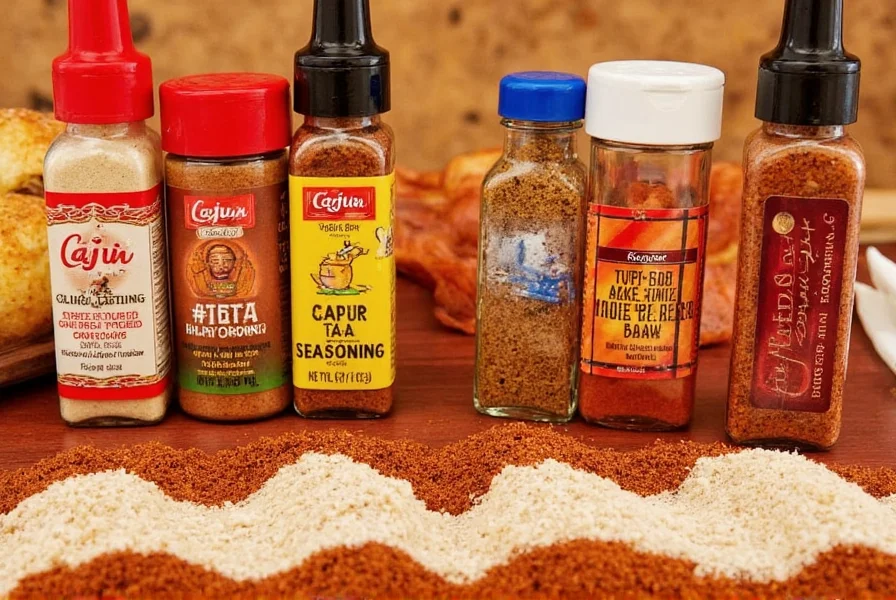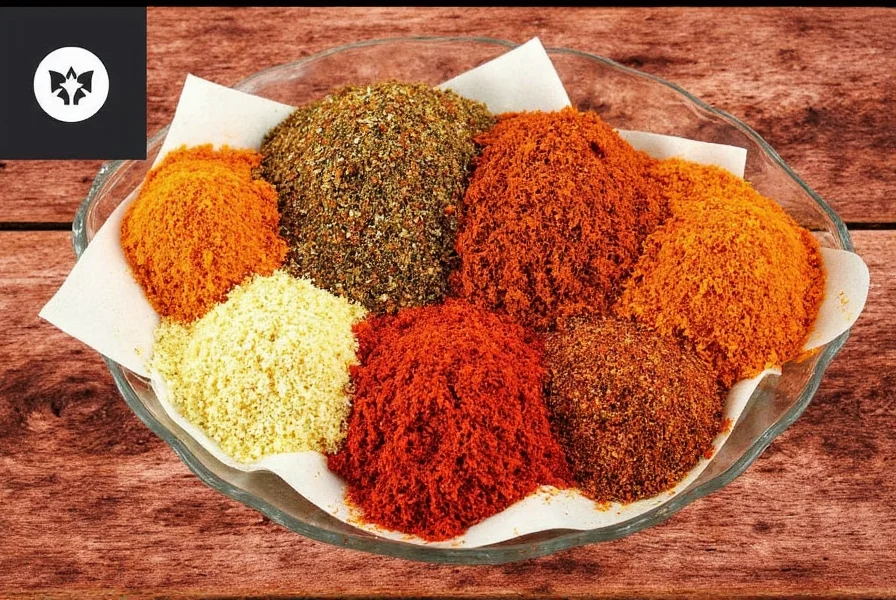Cajun Food Seasoning: Spicy Secrets Behind the South’s Hottest Flavor Explosion!
Ever bitten into a bowl of jambalaya or sunk your teeth into a spicy crawfish boil and wondered what made it so dang good? Chances are, cajun food seasoning was the unsung hero behind that flavor explosion. Whether you're a backyard cook looking to impress or a seasoned chef curious about Louisiana flavors, this guide will take you deep into the world of Cajun spice blends — from their roots in French-Caribbean fusion to how to make them work for your kitchen.
Table of Contents
- A Taste of History: Where Did Cajun Seasoning Come From?
- What’s Inside That Bottle? Breaking Down the Cajun Spice Blend
- Cajun vs. Creole: What’s the Real Difference?
- Spice Up Your Life: Creative Ways to Use Cajun Seasoning
- Buying Guide: Picking the Best Cajun Seasoning for You
- DIY Cajun Seasoning: How to Craft Your Own Signature Blend
- Final Thoughts: Let the Spice Be Your Muse
A Taste of History: Where Did Cajun Seasoning Come From?
The origins of Cajun seasoning can be traced back to Louisiana, particularly among the Acadian settlers who were exiled from Canada in the 18th century. These resilient folks brought with them their rustic cooking techniques and adapted to the ingredients found in their new Southern home. Over time, their dishes evolved into what we now know as Cajun cuisine — hearty, earthy, and packed with bold flavors.

Because the region offered access to spices like paprika, garlic, and cayenne, these became central to the seasoning blend. Unlike commercial spice mixes today, traditional Cajun seasoning used local herbs and whatever was available on hand. This improvisational spirit is still alive in modern-day blends — some hotter, some smokier, but all undeniably rich in character.
What’s Inside That Bottle? Breaking Down the Cajun Spice Blend
Cajun seasoning isn’t just salt and pepper slapped together. It’s a carefully curated symphony of heat, earthiness, and umami. Here's a breakdown of the typical components:
| Spice | Role | Flavor Contribution |
|---|---|---|
| Paprika | Bulk + mild sweetness | Smoky, sweet backbone |
| Cayenne Pepper | Heat | Fiery kick with subtle fruitiness |
| Garlic Powder | Aroma enhancer | Roasty, savory depth |
| Onion Powder | Umami booster | Sweet-savory base note |
| Black Pepper | Piquancy | Sharp, woody bite |
| Thyme & Oregano | Herbaceous notes | Dried floral & minty finish |
| Salt | Flavor conductor | Briny, mouthwatering effect |
Depending on the brand or homemade recipe, some blends may include smoked paprika for a campfire edge or crushed red pepper flakes for extra fire power.
Cajun vs. Creole: What’s the Real Difference?
You might have heard both terms thrown around at the spice rack and wondered — aren’t they basically the same thing? Well, not quite! While both originate from Louisiana, there are key differences:
| Feature | Cajun Seasoning | Creole Seasoning |
|---|---|---|
| Origin | Acadian (rural Louisiana) | New Orleans (urban fusion) |
| Main Heat Source | Cayenne Pepper | Mildly spiced or none |
| Key Herbs | Thyme, Bay Leaf | Oregano, Basil, Rosemary |
| Use Case | Stews, Gumbos, Smoked Meats | Seafood, Pastas, Sautéed Dishes |
Think of Cajun as bold, rustic, and fiery — perfect for slow-cooked pots and grilled meats. Creole is more aromatic and herbal, leaning toward seafood and lighter fare. But hey, don’t get too caught up in labels — use whichever tickles your taste buds best!
Spice Up Your Life: Creative Ways to Use Cajun Seasoning
Ready to jazz up your meals? Here are five unconventional ways to incorporate Cajun seasoning beyond the obvious gumbo:
- Cajun Popcorn: Toss freshly popped popcorn with melted butter and a heavy sprinkle of Cajun seasoning. Add Parmesan for an umami punch!
- Seasoned Nuts: Roast almonds or pecans with olive oil and Cajun mix for a spicy snack that pairs perfectly with bourbon.
- Marinade Magic: Mix with olive oil and lemon juice to create a marinade for chicken or shrimp before grilling or baking.
- Hash Brown Upgrade: Sprinkle over potatoes before roasting or pan-frying for a crispy, spicy crust.
- Caesar Dressing Twist: Stir a pinch into store-bought or homemade Caesar dressing for a zesty twist.
Buying Guide: Picking the Best Cajun Seasoning for You
With dozens of brands lining the shelves, how do you choose the right one? Here’s a quick guide to help you find your ideal match:
Top Brands & Their Features
| Brand | Heat Level | Best For | Special Feature |
|---|---|---|---|
| Old Bay Cajun | Mild | Shrimp boils, salads | Familiar, balanced blend |
| Tony Chachere’s Original | Medium | Gumbo, rice dishes | Classic Louisiana flavor |
| Slap Ya Mama Medium | Medium-Hot | Grilled meats, veggies | Coarse texture, robust flavor |
| McIlhenny Co. Tabasco Cajun | Hot | Soups, sauces, wings | Tabasco-infused heat |
| McCormick Cajun Grilling Blend | Mild-Smoky | Barbecue, grilled fish | Smoked paprika-forward |
Things to Consider When Buying
- Intended Use: Are you seasoning meat, vegetables, or seafood? Some blends are tailored for specific applications.
- Heat Level: If you prefer milder profiles, avoid products labeled “extra hot” unless you want your eyes watering during dinner.
- Allergen-Free: Check for allergens if you’re preparing food for guests or those with dietary restrictions.
- Natural Ingredients: Look for blends without artificial additives or preservatives.
DIY Cajun Seasoning: How to Craft Your Own Signature Blend
Feeling adventurous? Why not make your own cajun seasoning blend? Customize the heat level, play with herb combinations, or even add a little citrus zest for flair.
Basic Homemade Cajun Seasoning Recipe
- 3 tbsp paprika
- 1 tbsp cayenne pepper
- 1 tbsp garlic powder
- 1 tbsp onion powder
- 1 tsp dried thyme
- 1 tsp oregano
- 1 tsp black pepper
- 1 tbsp salt
Variation Ideas
- Smoky Version: Add 1 tsp smoked paprika.
- Lemon Zest: Add finely grated zest from one lemon after mixing.
- Extra Heat: Add ½ tsp crushed red pepper flakes.
- Garlic Lover’s: Double the garlic powder.

Final Thoughts: Let the Spice Be Your Muse
Cajun food seasoning isn't just about adding heat — it's about telling a story through flavor. With its roots in resilience and adaptation, it’s no wonder why this blend has stood the test of time and continues to ignite kitchens across the globe.
Whether you're a novice spice explorer or a culinary connoisseur, experimenting with Cajun seasoning can open up a whole new world of tastes. So go ahead — shake things up, throw caution to the wind, and let that cajun dust bring the soul of Louisiana to your next meal.










 浙公网安备
33010002000092号
浙公网安备
33010002000092号 浙B2-20120091-4
浙B2-20120091-4